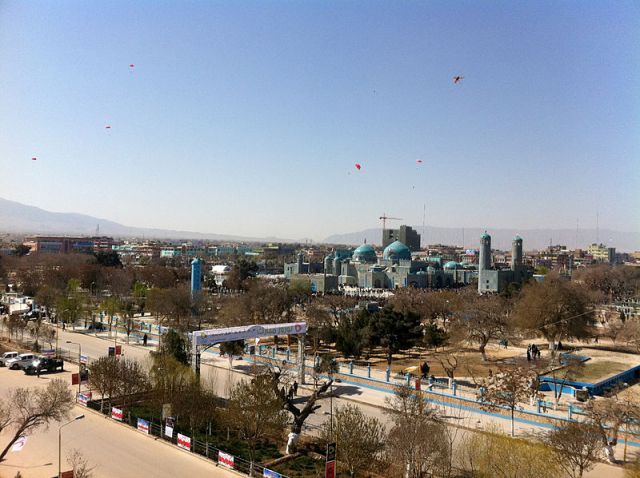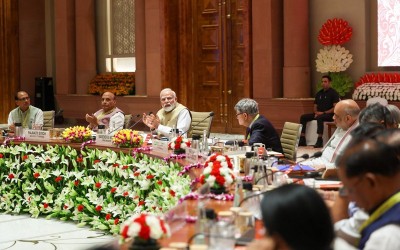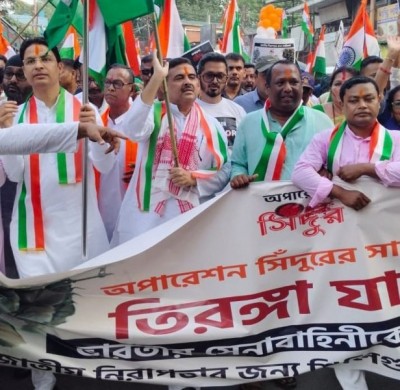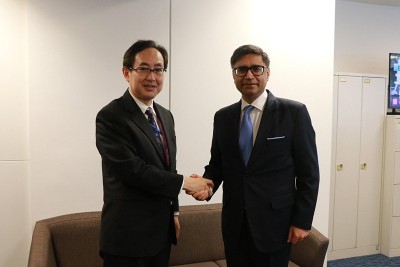
Battle for Supremacy
On July 23, 2018, over a dozen Islamic State (IS, also Daesh) and Afghan Taliban terrorists were killed internecine clashes in Kunar Province. According to reports, the clashes started from the Chapa Dara District and later spread to different parts of the Kunar Province.
On July 11, 2018, at least 26 terrorists were killed during clashes between Taliban and Daesh fighters in the Darzab District of Jawzjan Province. The 209th Shaheen Corps of the Afghan Military in the North disclosed that the clashes erupted in Darzab District after the Taliban launched a coordinated attack. According to a statement released by Shaheen Corps, at least 16 IS and 10 Taliban terrorists, including a ‘commander’, were killed during the clashes. The statement further added that 14 IS militants sustained injuries and at least nine others were ‘detained’ by the Taliban. Similarly, at least 11 Taliban militants sustained injuries while two were ‘detained’ by Daesh. According to the Shaheen Corps, the Taliban was attempting to clear Darzab District of the Daesh presence.
On June 30, 2018, six Daesh terrorists and one of the Taliban were killed in a clash in the Chapadara District of Kunar Province.
Partial data compiled by the South Asia Terrorism Portal (SATP), indicates that there were at least 11 such internecine clashes reported since the beginning of 2018, in which at least 103 terrorists have been killed (data till August 5, 2018). This included 24 from Daesh and 14 from Taliban. The group identity of the remaining 105 could not be ascertained.
Indeed, The National in a news report on July 15, 2018, quoted a Daesh source as stating, “Yes the war between the Afghan Taliban and Daesh branch in Khorasan has escalated. More attacks and more casualties…”
Daesh started making inroads into Afghanistan in 2014, in regions where the Taliban was once in power and subsequently continued to have significant presence and control over territory. According to June 2015 reports, fighters loyal to Daesh had seized sizeable territories. Reports citing witnesses who had fled Nangarhar Province due to fierce clashes between forces loyal to IS and those loyal to the Afghan Taliban, had claimed that Daesh had pushed the Taliban out from areas previously under its control. Haji Abdul Jan, a tribal elder from Achin District (Nangarhar Province) had stated,
They (Daesh loyalists) came in on many white pickup trucks mounted with big machine guns and fought the Taliban. The Taliban could not resist and fled… Unlike the Taliban, they (IS) don't force villagers to feed and house them. Instead, they have lots of cash in their pockets and spend it on food and luring young villagers to join them. Some villagers welcomed the new arrivals.
Further corroboration had come from Malek Islam, the District Chief of Achin, who noted that Daesh fighters were "almost everywhere in the District" but were targeting the Taliban only and “not us”.
By late June 2015, Daesh had consolidated its position in eight of Nangarhar’s 22 Districts and likely comprised a fighting force of 3,750 to 4,000 fighters. On May 30, 2016, the Afghanistan National Security Council (NSC) chaired by President Mohammad Ashraf Ghani, approved in principle the strategy to fight Daesh.
Nevertheless, Daesh started extending its influence and operations in several other areas of Afghanistan, including the Jawzjan and Kunar Provinces, retaining Nangarhar as its base. It gained further strength in 2016. Significantly, on March 17, 2017, Esa Khan Zawak, the District Governor of Achin District, observed that “Daeshwas still firmly entrenched in the area where they had military bases, training centers, prisons and even a court. We are in offensive status and do not feel serious threats, but almost 80 per cent of the fighters are foreigners.” Earlier, on February 14, 2017, Nazifullah Salarzai, Deputy Permanent Representative of Afghanistan at the United Nations, speaking during a meeting of the United Nations Security Council noted, “The ongoing cycle of violence in Afghanistan is not, by any means, a homegrown phenomenon. Its roots lie elsewhere, outside Afghanistan,” and added that the roots of violence emanated from a strategic design crafted “from within our region to advance an ill-fated political agenda, which serves no one, defies international law and constitutes a blatant violation of the very spirit and tenets of the UN Charter, including relevant counterterrorism resolutions of the General Assembly and Security Council.”
Not surprisingly, there was an escalation in the turf war during this period. Daesh, however, suffered major losses in the beginning of 2017. On April 13, 2017, a 21,600-pound Massive Ordnance Air Blast (MOAB), also commonly known as the Mother of All Bombs, dropped by U.S Forces killed at least 94 terrorists affiliated with the Daesh in a Daesh base in the Achin District of Nangarhar Province. Three tunnels used by Daesh fighters and as reservoirs of weapons and other equipment were destroyed in the attack. Later, the Nangahar Provincial Government disclosed that at least four key leaders of the group identified as Hamza Abu Bakar, Mohammad Ibrani, Hamid Kunari, and Walkin, were among those killed.
Despite these major losses, the war for supremacy goes on uninterrupted, though the Taliban appears to have an upper hand. Government officials stated, on August 1, 2018, that more than 150 Daesh fighters surrendered to Afghan Security Forces in Jawzjan Province after they were defeated and driven out by the Taliban. Mohammad Reza Ghafouri, a spokesman for the provincial Governor, observed, “The worries of neighbouring countries, and the presence of Daesh groups on their borders, have now been removed.” The Taliban also claimed, “The evil phenomenon of Daesh has completely been eliminated and people have been freed from its tortures in Jawzjan Province of Afghanistan.”
Daesh has also suffered recent losses in Kunar Province. According to a July 15, 2018, report, a Taliban source confirmed that they had captured parts of Kunar and Daesh had seen “some setbacks”. However, the Taliban emphasized, “They are not able to get firm control over the recaptured areas because soon they will be repelled back by the fighters of Islamic State. As the Islamic State prepares to retaliate, an unnamed Daesh source told the media,
The reason behind the escalation of recent attacks from both sides is due to Islamic State's quick expansion and control of more Taliban areas in the region. Islamic State will launch more attacks on the Taliban strongholds to capture more and more areas in order to expand the Islamic State in Khurasan.
The fratricidal war between Daesh and the Taliban could well be used to advantage by state Forces in Afghanistan, but the misery inflicted on the civilian population is unlikely to diminish, as the turf war between these two Islamist terrorist factions escalates.
Support Our Journalism
We cannot do without you.. your contribution supports unbiased journalism
IBNS is not driven by any ism- not wokeism, not racism, not skewed secularism, not hyper right-wing or left liberal ideals, nor by any hardline religious beliefs or hyper nationalism. We want to serve you good old objective news, as they are. We do not judge or preach. We let people decide for themselves. We only try to present factual and well-sourced news.







